Do you have a question about the Sharp Aquos LC-42X20E and is the answer not in the manual?
Greeting and thank you message to the customer.
Essential safety guidelines for product usage and handling.
List of registered trademarks and logos used in the manual.
Lists items included in the product package.
Step-by-step instructions for mounting the TV stand.
Guide for correctly inserting batteries into the remote control.
Instructions on how to operate the remote control effectively.
Warnings about handling and operating the remote control.
A step-by-step overview of the initial TV setup process.
Guidance on connecting audio-visual equipment to the TV.
Automatic setup process for channels and settings.
Basic daily usage instructions for the TV.
How to switch between analogue and digital TV signals.
Methods for changing TV channels.
Information and settings for the Electronic Programme Guide.
How to find and select programmes via the EPG.
Setting up future programme recordings using the EPG.
Instructions for accessing and using the Teletext service.
Overview of TV terminals and connection types.
Guide for connecting HDMI devices for digital audio/video.
Instructions for connecting devices using component video cables.
How to connect devices using S-Video or standard Video cables.
Details on connecting devices via SCART terminals.
Using AV Link for controlling connected SCART devices.
Connecting external audio systems or amplifiers to the TV.
Guide for inserting a Conditional Access (CA) card.
Operating connected HDMI devices with one remote.
Steps for connecting AQUOS LINK compatible devices.
Configuration options for AQUOS LINK features.
Specific operations of connected AQUOS LINK devices.
General procedures for navigating and using the TV menu.
Adjusting picture quality parameters like brightness and contrast.
Setting colour temperature for optimal white balance.
Enhancing picture quality for motion by reducing blur.
Adjusting sound parameters like treble, bass, and balance.
Selecting preset viewing modes for different content types.
Managing TV channels, including auto installation.
Automatic detection and storage of available TV channels.
Manual configuration of analogue TV channels.
Setting up PINs and parental controls for TV usage.
Selecting OSD, subtitle, and audio languages.
Adjusting screen display options and information.
Manually setting picture size for 16:9 programmes on 4:3 TVs.
Using DNR to improve picture clarity and reduce noise.
Equalizing volume levels across different sound sources.
Enhancing dialogue clarity by reducing background noise.
Listening to audio without displaying the screen image.
Showing channel information on screen.
Displaying current time and programme titles.
Configuring TV settings for connected external equipment.
Setting the signal type for various external inputs.
Assigning custom names to input sources.
Option to skip certain input sources in the selection menu.
Adjusting the colour system for optimal image display.
Miscellaneous features like standby mode settings.
Connecting a PC to the TV using an HDMI cable.
Connecting a PC to the TV using analogue VGA or DVI cables.
How to set up the TV to display PC output.
Adjusting the PC image aspect ratio on the TV screen.
Using Auto Sync to automatically adjust PC image settings.
Manually fine-tuning PC image position and clarity.
Setting the PC input resolution for proper display.
Technical details for controlling the TV via RS-232C.
Table showing supported PC resolutions and frequencies.
List of commands for PC control via RS-232C.
Solutions for common problems and issues with the TV.
Instructions for updating TV software through digital broadcast.
Guide to resetting TV settings to factory defaults.
How to check TV identification details for service.
Technical details and features of the TV models.
Guidelines for proper disposal of the product and batteries.
Table showing age ratings for parental lock functionality.
Greeting and thank you message to the customer.
Essential safety guidelines for product usage and handling.
List of registered trademarks and logos used in the manual.
Lists items included in the product package.
Step-by-step instructions for mounting the TV stand.
Guide for correctly inserting batteries into the remote control.
Instructions on how to operate the remote control effectively.
Warnings about handling and operating the remote control.
A step-by-step overview of the initial TV setup process.
Guidance on connecting audio-visual equipment to the TV.
Automatic setup process for channels and settings.
Basic daily usage instructions for the TV.
How to switch between analogue and digital TV signals.
Methods for changing TV channels.
Information and settings for the Electronic Programme Guide.
How to find and select programmes via the EPG.
Setting up future programme recordings using the EPG.
Instructions for accessing and using the Teletext service.
Overview of TV terminals and connection types.
Guide for connecting HDMI devices for digital audio/video.
Instructions for connecting devices using component video cables.
How to connect devices using S-Video or standard Video cables.
Details on connecting devices via SCART terminals.
Using AV Link for controlling connected SCART devices.
Connecting external audio systems or amplifiers to the TV.
Guide for inserting a Conditional Access (CA) card.
Operating connected HDMI devices with one remote.
Steps for connecting AQUOS LINK compatible devices.
Configuration options for AQUOS LINK features.
Specific operations of connected AQUOS LINK devices.
General procedures for navigating and using the TV menu.
Adjusting picture quality parameters like brightness and contrast.
Setting colour temperature for optimal white balance.
Enhancing picture quality for motion by reducing blur.
Adjusting sound parameters like treble, bass, and balance.
Selecting preset viewing modes for different content types.
Managing TV channels, including auto installation.
Automatic detection and storage of available TV channels.
Manual configuration of analogue TV channels.
Setting up PINs and parental controls for TV usage.
Selecting OSD, subtitle, and audio languages.
Adjusting screen display options and information.
Manually setting picture size for 16:9 programmes on 4:3 TVs.
Using DNR to improve picture clarity and reduce noise.
Equalizing volume levels across different sound sources.
Enhancing dialogue clarity by reducing background noise.
Listening to audio without displaying the screen image.
Showing channel information on screen.
Displaying current time and programme titles.
Configuring TV settings for connected external equipment.
Setting the signal type for various external inputs.
Assigning custom names to input sources.
Option to skip certain input sources in the selection menu.
Adjusting the colour system for optimal image display.
Miscellaneous features like standby mode settings.
Connecting a PC to the TV using an HDMI cable.
Connecting a PC to the TV using analogue VGA or DVI cables.
How to set up the TV to display PC output.
Adjusting the PC image aspect ratio on the TV screen.
Using Auto Sync to automatically adjust PC image settings.
Manually fine-tuning PC image position and clarity.
Setting the PC input resolution for proper display.
Technical details for controlling the TV via RS-232C.
Table showing supported PC resolutions and frequencies.
List of commands for PC control via RS-232C.
Solutions for common problems and issues with the TV.
Instructions for updating TV software through digital broadcast.
Guide to resetting TV settings to factory defaults.
How to check TV identification details for service.
Technical details and features of the TV models.
Guidelines for proper disposal of the product and batteries.
Table showing age ratings for parental lock functionality.
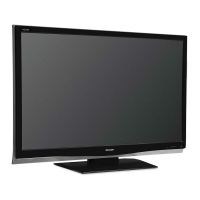
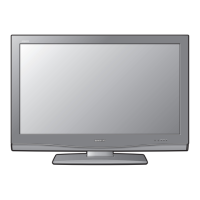
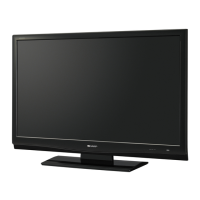
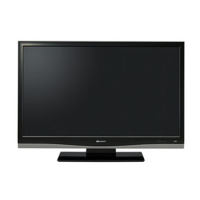
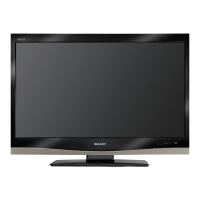
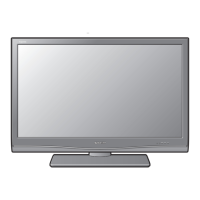
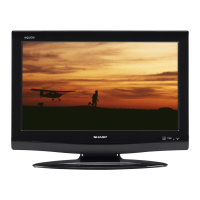
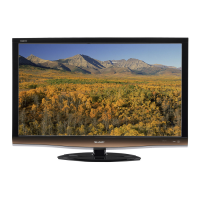
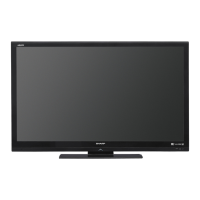
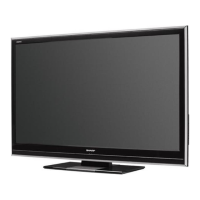
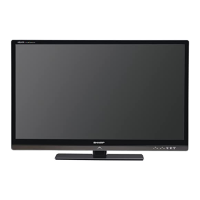
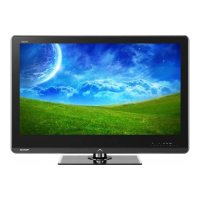
